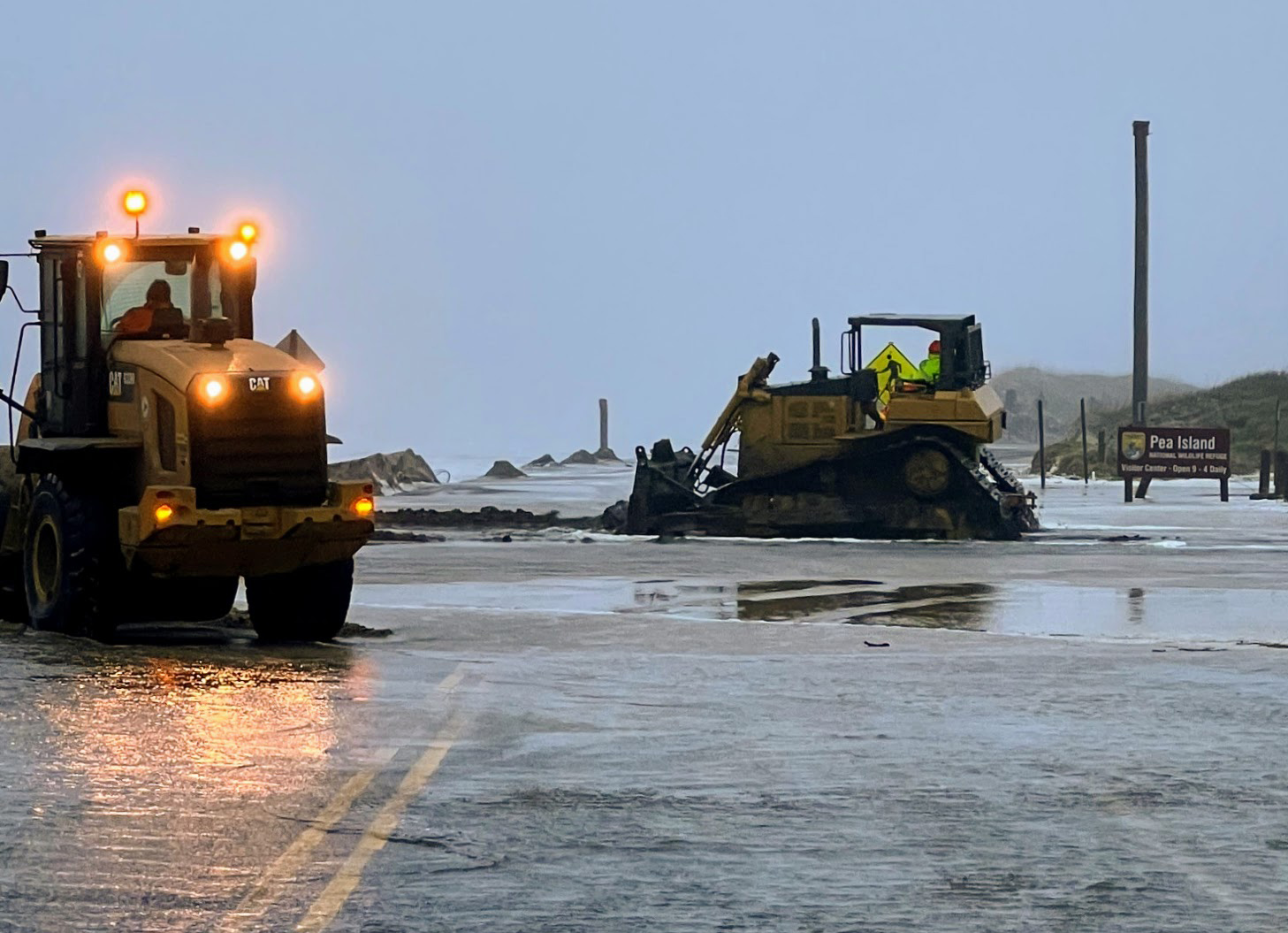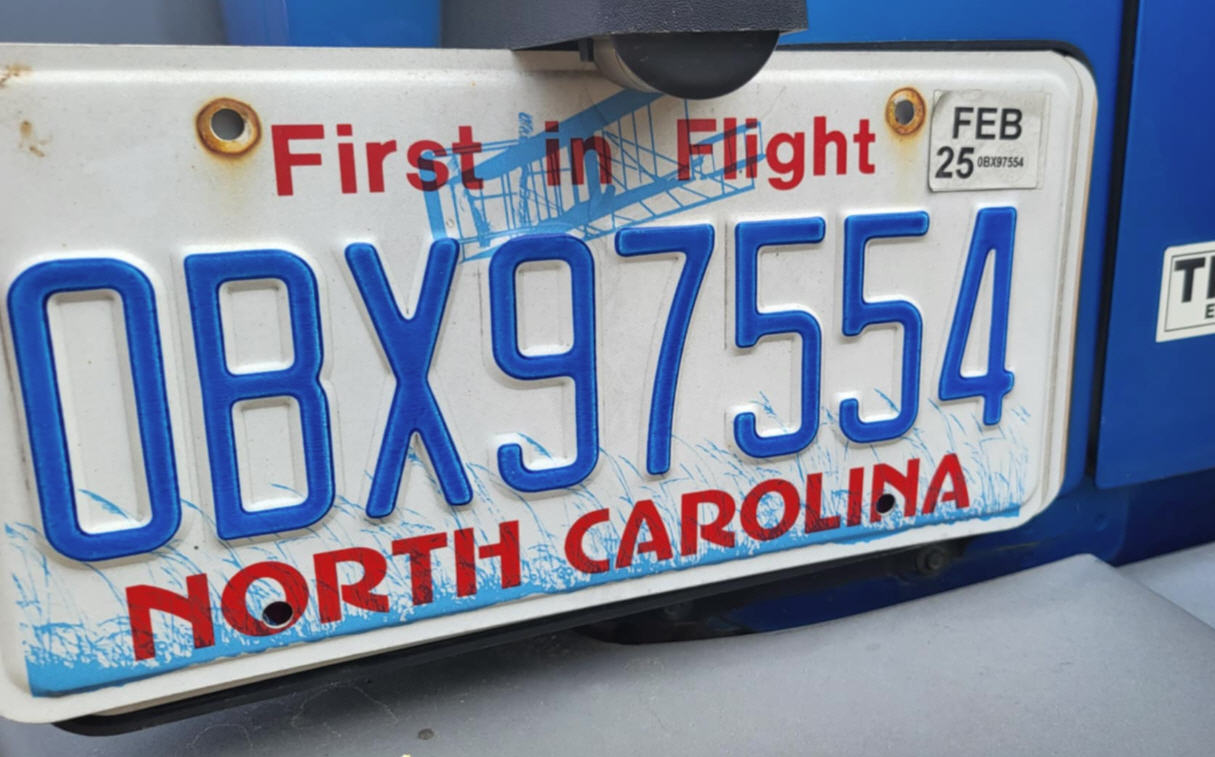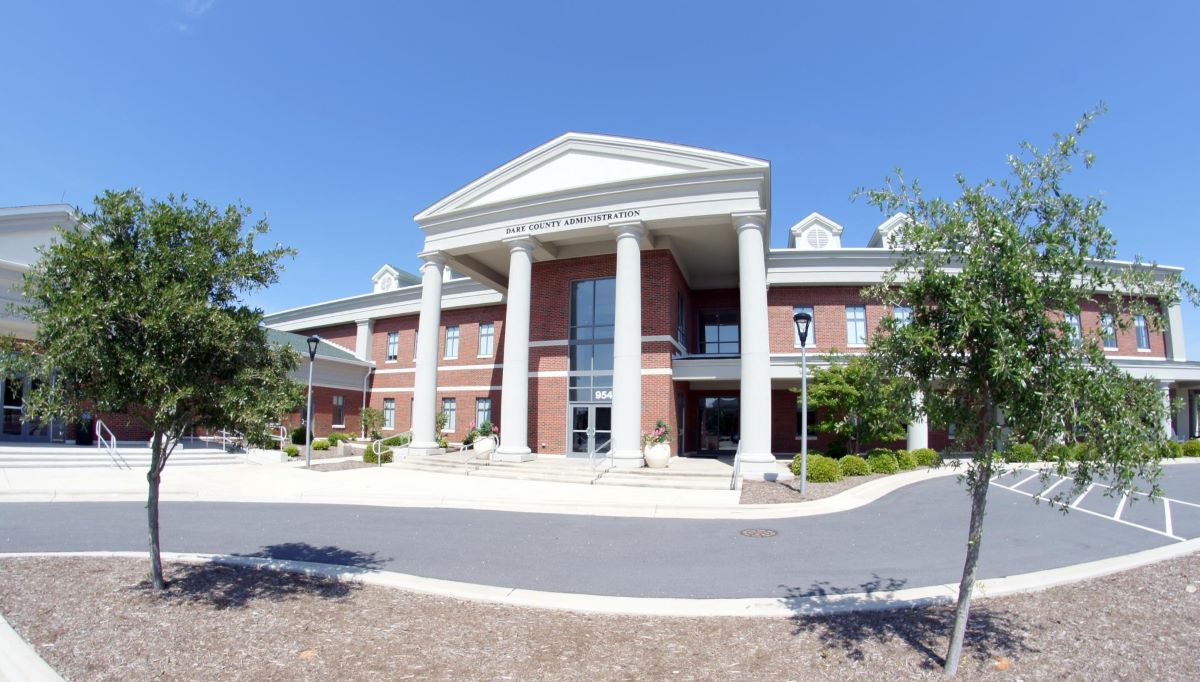While walking the Ocracoke beach the other day, just north of the pony pens, I stopped to study a configuration of timbers and metal, partially buried in the sand. I had seen it before, and I knew that it was the remains of a ship that had wrecked nearby, but it never ceases to draw my attention. I have watched my share of movies about shipwrecks, and I’ve spent some pretty scary moments on storm-tossed boats myself. I know what awe, terror, and sometimes heroism they can inspire, and I always wonder what story these timbers would tell, if they could. The waters off of Ocracoke Island are part of what is called “the Graveyard of the Atlantic,” and the shores are no stranger to ships and boats that have run awry here. The Labrador and Gulf Stream currents converge nearby, causing frequent storms and unpredictable weather conditions. The shoals that lie just off the coastline change quickly and charts are often unreliable. Ocracoke’s beaches are littered with the remains of victims of the sea, and the Coast Guard logs abound with accounts of them. Forty shipwrecks have been officially recorded at Ocracoke, according to Carl Goerch, author of the book “Ocracoke,” and this does not include ships of fewer than 50 tons. A list compiled by the Hyde County Historical Society in 1976 for its book, “The Story of Ocracoke,” lists 39. The first of these was wrecked in 1819; the last three in 1942, the victims of German submarine attacks during World War II. Most were wooden sailing vessels, but the last three were tankers. The list does not include the wreck of the Tiger, which happened in 1585, when Simon Fernando, chief pilot for Sir Richard Grenville’s English expedition to the new world, ran aground in his flagship. Most of the gear was destroyed by the saltwater, but the Tiger was eventually repaired and re-launched. It went on, along with the rest of the expedition, to Roanoke Island and what later became known as the Lost Colony. Also not on the list was a shipwreck described by David Shears in his book “Ocracoke: Its History and People.” Shears relates how, in 1750, a Spanish mercantile vessel, the Nuestra Senora, was wrecked on the island (recorded as “Occacock”) during a fierce storm. Its rich cargo–a million pieces-of-eight — was plundered by islanders who, according to Shears, were angered by previous Spanish pirating. Alton Ballance includes in his book “Ocracokers” a copy of a letter written by the captain of the sloop Henry, traveling from New York to Charleston, S.C., in 1819. It says that the ship ran aground “on the south beach of Ocracoke Bar, four miles from land” in a strong gale. All hands but the captain were lost. This shipwreck was included on the above mentioned list, as are those that follow. Local legend has it that Ocracoke’s wild ponies landed on these shores after a shipwreck, perhaps during the 17th or 18th century. There is also a story about a ship called the Black Squall, which was carrying a circus troupe and animals from Havana to New York in 1861, being caught in a storm near Ocracoke. The ship wrecked on the beach, and all aboard were lost, except for two beautiful Arabian horses, who escaped and made the island their home.
By PAT GARBER
By PAT GARBER
While walking the Ocracoke beach the other day, just north of the pony pens, I stopped to study a configuration of timbers and metal, partially buried in the sand. I had seen it before, and I knew that it was the remains of a ship that had wrecked nearby, but it never ceases to draw my attention.
I have watched my share of movies about shipwrecks, and I’ve spent some pretty scary moments on storm-tossed boats myself. I know what awe, terror, and sometimes heroism they can inspire, and I always wonder what story these timbers would tell, if they could.
The waters off of Ocracoke Island are part of what is called “the Graveyard of the Atlantic,” and the shores are no stranger to ships and boats that have run awry here. The Labrador and Gulf Stream currents converge nearby, causing frequent storms and unpredictable weather conditions. The shoals that lie just off the coastline change quickly and charts are often unreliable. Ocracoke’s beaches are littered with the remains of victims of the sea, and the Coast Guard logs abound with accounts of them.
Forty shipwrecks have been officially recorded at Ocracoke, according to Carl Goerch, author of the book “Ocracoke,” and this does not include ships of fewer than 50 tons. A list compiled by the Hyde County Historical Society in 1976 for its book, “The Story of Ocracoke,” lists 39. The first of these was wrecked in 1819; the last three in 1942, the victims of German submarine attacks during World War II. Most were wooden sailing vessels, but the last three were tankers.
The list does not include the wreck of the Tiger, which happened in 1585, when Simon Fernando, chief pilot for Sir Richard Grenville’s English expedition to the new world, ran aground in his flagship. Most of the gear was destroyed by the saltwater, but the Tiger was eventually repaired and re-launched. It went on, along with the rest of the expedition, to Roanoke Island and what later became known as the Lost Colony.
Also not on the list was a shipwreck described by David Shears in his book “Ocracoke: Its History and People.” Shears relates how, in 1750, a Spanish mercantile vessel, the Nuestra Senora, was wrecked on the island (recorded as “Occacock”) during a fierce storm. Its rich cargo–a million pieces-of-eight — was plundered by islanders who, according to Shears, were angered by previous Spanish pirating.
Alton Ballance includes in his book “Ocracokers” a copy of a letter written by the captain of the sloop Henry, traveling from New York to Charleston, S.C., in 1819. It says that the ship ran aground “on the south beach of Ocracoke Bar, four miles from land” in a strong gale. All hands but the captain were lost. This shipwreck was included on the above mentioned list, as are those that follow.
Local legend has it that Ocracoke’s wild ponies landed on these shores after a shipwreck, perhaps during the 17th or 18th century. There is also a story about a ship called the Black Squall, which was carrying a circus troupe and animals from Havana to New York in 1861, being caught in a storm near Ocracoke. The ship wrecked on the beach, and all aboard were lost, except for two beautiful Arabian horses, who escaped and made the island their home.
While walking the Ocracoke beach the other day, just north of the pony pens, I stopped to study a configuration of timbers and metal, partially buried in the sand. I had seen it before, and I knew that it was the remains of a ship that had wrecked nearby, but it never ceases to draw my attention.
I have watched my share of movies about shipwrecks, and I’ve spent some pretty scary moments on storm-tossed boats myself. I know what awe, terror, and sometimes heroism they can inspire, and I always wonder what story these timbers would tell, if they could.
The waters off of Ocracoke Island are part of what is called “the Graveyard of the Atlantic,” and the shores are no stranger to ships and boats that have run awry here. The Labrador and Gulf Stream currents converge nearby, causing frequent storms and unpredictable weather conditions. The shoals that lie just off the coastline change quickly and charts are often unreliable. Ocracoke’s beaches are littered with the remains of victims of the sea, and the Coast Guard logs abound with accounts of them.
Forty shipwrecks have been officially recorded at Ocracoke, according to Carl Goerch, author of the book “Ocracoke,” and this does not include ships of fewer than 50 tons. A list compiled by the Hyde County Historical Society in 1976 for its book, “The Story of Ocracoke,” lists 39. The first of these was wrecked in 1819; the last three in 1942, the victims of German submarine attacks during World War II. Most were wooden sailing vessels, but the last three were tankers.
The list does not include the wreck of the Tiger, which happened in 1585, when Simon Fernando, chief pilot for Sir Richard Grenville’s English expedition to the new world, ran aground in his flagship. Most of the gear was destroyed by the saltwater, but the Tiger was eventually repaired and re-launched. It went on, along with the rest of the expedition, to Roanoke Island and what later became known as the Lost Colony.
Also not on the list was a shipwreck described by David Shears in his book “Ocracoke: Its History and People.” Shears relates how, in 1750, a Spanish mercantile vessel, the Nuestra Senora, was wrecked on the island (recorded as “Occacock”) during a fierce storm. Its rich cargo–a million pieces-of-eight — was plundered by islanders who, according to Shears, were angered by previous Spanish pirating.
Alton Ballance includes in his book “Ocracokers” a copy of a letter written by the captain of the sloop Henry, traveling from New York to Charleston, S.C., in 1819. It says that the ship ran aground “on the south beach of Ocracoke Bar, four miles from land” in a strong gale. All hands but the captain were lost. This shipwreck was included on the above mentioned list, as are those that follow.
Local legend has it that Ocracoke’s wild ponies landed on these shores after a shipwreck, perhaps during the 17th or 18th century. There is also a story about a ship called the Black Squall, which was carrying a circus troupe and animals from Havana to New York in 1861, being caught in a storm near Ocracoke. The ship wrecked on the beach, and all aboard were lost, except for two beautiful Arabian horses, who escaped and made the island their home.
While walking the Ocracoke beach the other day, just north of the pony pens, I stopped to study a configuration of timbers and metal, partially buried in the sand. I had seen it before, and I knew that it was the remains of a ship that had wrecked nearby, but it never ceases to draw my attention.
I have watched my share of movies about shipwrecks, and I’ve spent some pretty scary moments on storm-tossed boats myself. I know what awe, terror, and sometimes heroism they can inspire, and I always wonder what story these timbers would tell, if they could.
The waters off of Ocracoke Island are part of what is called “the Graveyard of the Atlantic,” and the shores are no stranger to ships and boats that have run awry here. The Labrador and Gulf Stream currents converge nearby, causing frequent storms and unpredictable weather conditions. The shoals that lie just off the coastline change quickly and charts are often unreliable. Ocracoke’s beaches are littered with the remains of victims of the sea, and the Coast Guard logs abound with accounts of them.
Forty shipwrecks have been officially recorded at Ocracoke, according to Carl Goerch, author of the book “Ocracoke,” and this does not include ships of fewer than 50 tons. A list compiled by the Hyde County Historical Society in 1976 for its book, “The Story of Ocracoke,” lists 39. The first of these was wrecked in 1819; the last three in 1942, the victims of German submarine attacks during World War II. Most were wooden sailing vessels, but the last three were tankers.
The list does not include the wreck of the Tiger, which happened in 1585, when Simon Fernando, chief pilot for Sir Richard Grenville’s English expedition to the new world, ran aground in his flagship. Most of the gear was destroyed by the saltwater, but the Tiger was eventually repaired and re-launched. It went on, along with the rest of the expedition, to Roanoke Island and what later became known as the Lost Colony.
Also not on the list was a shipwreck described by David Shears in his book “Ocracoke: Its History and People.” Shears relates how, in 1750, a Spanish mercantile vessel, the Nuestra Senora, was wrecked on the island (recorded as “Occacock”) during a fierce storm. Its rich cargo–a million pieces-of-eight — was plundered by islanders who, according to Shears, were angered by previous Spanish pirating.
Alton Ballance includes in his book “Ocracokers” a copy of a letter written by the captain of the sloop Henry, traveling from New York to Charleston, S.C., in 1819. It says that the ship ran aground “on the south beach of Ocracoke Bar, four miles from land” in a strong gale. All hands but the captain were lost. This shipwreck was included on the above mentioned list, as are those that follow.
Local legend has it that Ocracoke’s wild ponies landed on these shores after a shipwreck, perhaps during the 17th or 18th century. There is also a story about a ship called the Black Squall, which was carrying a circus troupe and animals from Havana to New York in 1861, being caught in a storm near Ocracoke. The ship wrecked on the beach, and all aboard were lost, except for two beautiful Arabian horses, who escaped and made the island their home.
One of the most famous ships to run aground at Ocracoke was the steamboat Home, which sailed out of New York City harbor in 1837. Known as the “Queen of the Seas,” this paddle-wheel steamer with sails was on its way to Charleston, S.C
One of the most famous ships to run aground at Ocracoke was the steamboat Home, which sailed out of New York City harbor in 1837. Known as the “Queen of the Seas,” this paddle-wheel steamer with sails was on its way to Charleston, S.C
One of the most famous ships to run aground at Ocracoke was the steamboat Home, which sailed out of New York City harbor in 1837. Known as the “Queen of the Seas,” this paddle-wheel steamer with sails was on its way to Charleston, S.C
ying 130-plus passengers said to be the “cream of the society” of both cities.
ying 130-plus passengers said to be the “cream of the society” of both cities.
ying 130-plus passengers said to be the “cream of the society” of both cities.
It ran into hurricane force winds off of Hatteras Island and hit the beach about four miles north of Ocracoke Village at 10 P.M. It fell apart in the surf and, despite rescue attempts, 90 men, women, and children died. Later it was determined that only two life preservers had been on board. As a result of this wreck, Congress passed the Steamboat Act of 1838, requiring that all ships be equipped with life preservers.
In 1899, on Christmas Eve, the navigator on the British schooner-rigged steamship, Aristo, mistook the Ocracoke Lighthouse for the Hatteras Light. The ship, which had been carrying wheat, lumber, and cotton, ran aground near the north end of the island, and the captain ordered the men into lifeboats. The boats capsized and all but nine of the 31 men drowned. The people in Ocracoke village took the survivors into their homes and shared Christmas dinner with them the next day.
The largest sailing vessel to wreck on Ocracoke’s shores was the George W. Wells, lost on Sept. 3, 1913. The first six-masted sailing ship to cross the Atlantic, it was on its way from Boston to Fernandina, Fla., when it encountered hurricane-force winds near Hatteras Island. The ship, which had 28 sails and weighed 2,970 tons, ran aground six miles south of Hatteras Inlet. The rescue team managed to save all of the 21 people aboard, as well a St. Bernard dog, pulling in the victims in life boats.
Most intriguing, perhaps, of the shipwrecks associated with Ocracoke is the Carroll A. Deering, better known as the ‘ghost ship.” On its way from Rio de Janeiro to Norfolk in December of 1920, the ship ran aground on one of the shoals near Hatteras Island.
It ran into hurricane force winds off of Hatteras Island and hit the beach about four miles north of Ocracoke Village at 10 P.M. It fell apart in the surf and, despite rescue attempts, 90 men, women, and children died. Later it was determined that only two life preservers had been on board. As a result of this wreck, Congress passed the Steamboat Act of 1838, requiring that all ships be equipped with life preservers.
In 1899, on Christmas Eve, the navigator on the British schooner-rigged steamship, Aristo, mistook the Ocracoke Lighthouse for the Hatteras Light. The ship, which had been carrying wheat, lumber, and cotton, ran aground near the north end of the island, and the captain ordered the men into lifeboats. The boats capsized and all but nine of the 31 men drowned. The people in Ocracoke village took the survivors into their homes and shared Christmas dinner with them the next day.
The largest sailing vessel to wreck on Ocracoke’s shores was the George W. Wells, lost on Sept. 3, 1913. The first six-masted sailing ship to cross the Atlantic, it was on its way from Boston to Fernandina, Fla., when it encountered hurricane-force winds near Hatteras Island. The ship, which had 28 sails and weighed 2,970 tons, ran aground six miles south of Hatteras Inlet. The rescue team managed to save all of the 21 people aboard, as well a St. Bernard dog, pulling in the victims in life boats.
Most intriguing, perhaps, of the shipwrecks associated with Ocracoke is the Carroll A. Deering, better known as the ‘ghost ship.” On its way from Rio de Janeiro to Norfolk in December of 1920, the ship ran aground on one of the shoals near Hatteras Island.
It ran into hurricane force winds off of Hatteras Island and hit the beach about four miles north of Ocracoke Village at 10 P.M. It fell apart in the surf and, despite rescue attempts, 90 men, women, and children died. Later it was determined that only two life preservers had been on board. As a result of this wreck, Congress passed the Steamboat Act of 1838, requiring that all ships be equipped with life preservers.
In 1899, on Christmas Eve, the navigator on the British schooner-rigged steamship, Aristo, mistook the Ocracoke Lighthouse for the Hatteras Light. The ship, which had been carrying wheat, lumber, and cotton, ran aground near the north end of the island, and the captain ordered the men into lifeboats. The boats capsized and all but nine of the 31 men drowned. The people in Ocracoke village took the survivors into their homes and shared Christmas dinner with them the next day.
The largest sailing vessel to wreck on Ocracoke’s shores was the George W. Wells, lost on Sept. 3, 1913. The first six-masted sailing ship to cross the Atlantic, it was on its way from Boston to Fernandina, Fla., when it encountered hurricane-force winds near Hatteras Island. The ship, which had 28 sails and weighed 2,970 tons, ran aground six miles south of Hatteras Inlet. The rescue team managed to save all of the 21 people aboard, as well a St. Bernard dog, pulling in the victims in life boats.
Most intriguing, perhaps, of the shipwrecks associated with Ocracoke is the Carroll A. Deering, better known as the ‘ghost ship.” On its way from Rio de Janeiro to Norfolk in December of 1920, the ship ran aground on one of the shoals near Hatteras Island.
A rescue party from the Hatteras Inlet Lifesaving Station went out to offer help, but found no one there — just a hungry, gray cat.
“Everything aboard was shipshape,” relayed James Midgett, part of the rescue crew. “There were no signs of any disorder or any indications of a hasty departure by the men aboard. The table in the mess-room was set with plates, knives, and forks.”
A year or so later the bow of the Deering washed up on a beach at Ocracoke Island and was eventually buried, according to Goerch’s book, but in 1955 a hurricane unearthed it and sent it back up to Hatteras Island.
Studies have identified 11 archeologically documented shipwreck sites on Ocracoke Island, ranging in size from a single timber,11feet and 11 inches long, to large fragments of hull, 20-by-50 feet. They appear and disappear as storms come and go, covering and uncovering the remains.
With modern equipment, stricter safety regulations, and improved methods of navigation, the risk of losing ships and boats off the Outer Banks is greatly diminished. But the dangerous shoals and fierce storms that gave the Graveyard of the Atlantic its name continue to make the waters surrounding Ocracoke a challenging waterway to navigate.
A rescue party from the Hatteras Inlet Lifesaving Station went out to offer help, but found no one there — just a hungry, gray cat.
“Everything aboard was shipshape,” relayed James Midgett, part of the rescue crew. “There were no signs of any disorder or any indications of a hasty departure by the men aboard. The table in the mess-room was set with plates, knives, and forks.”
A year or so later the bow of the Deering washed up on a beach at Ocracoke Island and was eventually buried, according to Goerch’s book, but in 1955 a hurricane unearthed it and sent it back up to Hatteras Island.
Studies have identified 11 archeologically documented shipwreck sites on Ocracoke Island, ranging in size from a single timber,11feet and 11 inches long, to large fragments of hull, 20-by-50 feet. They appear and disappear as storms come and go, covering and uncovering the remains.
With modern equipment, stricter safety regulations, and improved methods of navigation, the risk of losing ships and boats off the Outer Banks is greatly diminished. But the dangerous shoals and fierce storms that gave the Graveyard of the Atlantic its name continue to make the waters surrounding Ocracoke a challenging waterway to navigate.
A rescue party from the Hatteras Inlet Lifesaving Station went out to offer help, but found no one there — just a hungry, gray cat.
“Everything aboard was shipshape,” relayed James Midgett, part of the rescue crew. “There were no signs of any disorder or any indications of a hasty departure by the men aboard. The table in the mess-room was set with plates, knives, and forks.”
A year or so later the bow of the Deering washed up on a beach at Ocracoke Island and was eventually buried, according to Goerch’s book, but in 1955 a hurricane unearthed it and sent it back up to Hatteras Island.
Studies have identified 11 archeologically documented shipwreck sites on Ocracoke Island, ranging in size from a single timber,11feet and 11 inches long, to large fragments of hull, 20-by-50 feet. They appear and disappear as storms come and go, covering and uncovering the remains.
With modern equipment, stricter safety regulations, and improved methods of navigation, the risk of losing ships and boats off the Outer Banks is greatly diminished. But the dangerous shoals and fierce storms that gave the Graveyard of the Atlantic its name continue to make the waters surrounding Ocracoke a challenging waterway to navigate.
Subject
Name
(required, will not be published)
(required, will not be published)
City :
State :
Your Comments:
May be posted on the Letters to the Editor page at the discretion of the editor.
May be posted on the Letters to the Editor page at the discretion of the editor.
May be posted on the Letters to the Editor page at the discretion of the editor.
May be posted on the Letters to the Editor page at the discretion of the editor.
















